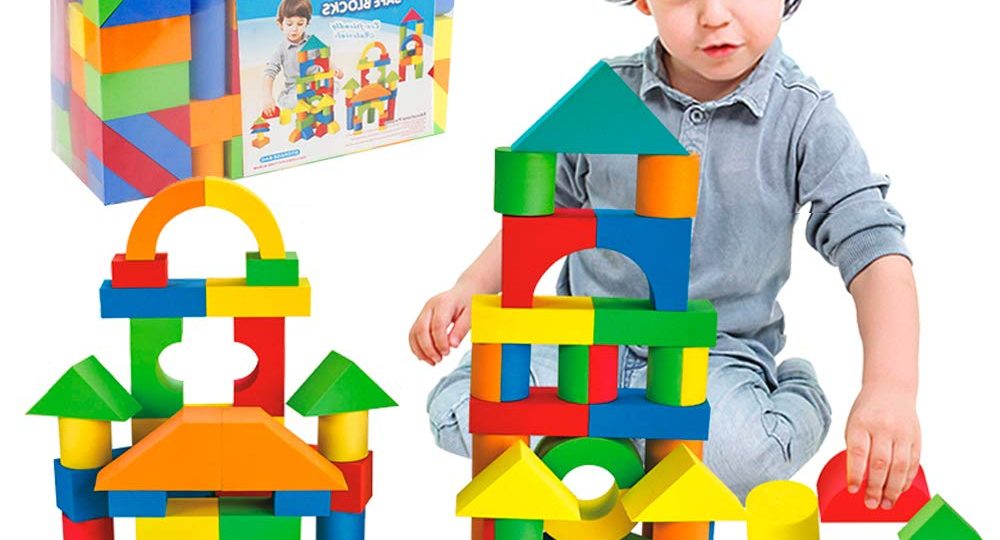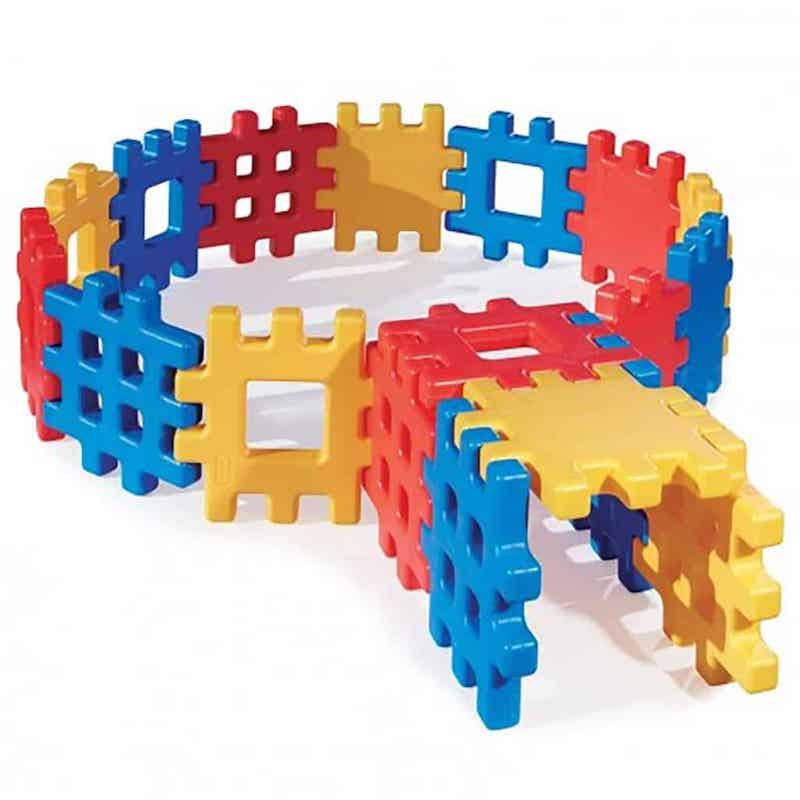
The Benefits of Building Toys for Toddlers
Introduction
Building a strong relationship requires consistent effort, effective communication, mutual respect, and a willingness to work through challenges together. Without these components, a relationship can quickly deteriorate and lose its strength. Therefore, it is essential to actively nurture and maintain the bond between partners.
Effective communication is key in building a strong relationship. This includes openly expressing thoughts and feelings, actively listening to one another, and being willing to compromise. Without clear and honest communication, misunderstandings and conflicts can arise, causing strain on the relationship.
Playing with building toys is essential for a child’s development. Not only do these toys encourage creativity, problem-solving, and fine motor skills, but they also provide a sense of accomplishment when a child successfully creates something. In this article, we will explore the benefits of building toys for toddlers and provide some creative ideas for DIY building toy projects.
Part 1: The Cognitive Benefits of Building Toys for Toddlers
Level 1: Cognitive Development
Building toys help toddlers develop important cognitive skills such as spatial awareness, problem-solving, and critical thinking. As they manipulate the pieces to create structures, they are learning about shapes, sizes, and how things fit together.
Level 2: Language Development
When toddlers play with building toys, they are often communicating with others about what they are creating. This provides opportunities for them to expand their vocabulary, practice their communication skills, and learn to follow directions.
Mutual respect is another vital component of a strong relationship. Partners must value and appreciate each other’s opinions, boundaries, and differences. Respecting each other’s individuality and autonomy fosters a healthy and supportive partnership.
Building trust is crucial in establishing a strong foundation for a relationship. Trust is achieved through transparency, reliability, and consistency in behavior. It is important to be honest and dependable in your actions and to follow through on commitments. By demonstrating trustworthiness, partners can feel secure in their relationship.
Part 2: The Motor Skills Benefits of Building Toys for Toddlers
Level 1: Fine Motor Skills
Building toys require the use of fine motor skills as toddlers grasp, stack, and manipulate the pieces. This helps strengthen their hand muscles and improves their dexterity.
Level 2: Hand-Eye Coordination
As toddlers build with toys, they are also improving their hand-eye coordination. This is an important skill that will benefit them in other areas of their life, such as sports and writing.
Part 3: Creative DIY Building Toy Projects for Toddlers
Level 1: Cardboard Box Castle
One fun and inexpensive DIY building toy project for toddlers is to create a cardboard box castle. Simply collect some large cardboard boxes, cut out door and window shapes, and let your toddler decorate the boxes with markers, paint, or stickers.
Level 2: Homemade Playdough
Another creative DIY building toy project is to make homemade playdough. Toddlers can use the playdough to create shapes, animals, and anything else they can imagine. Plus, making the playdough provides a sensory experience for them.
It is important to work through challenges together. Every relationship faces obstacles, and it is essential to address and resolve these issues as a team. This requires patience, understanding, and a willingness to compromise. By working through challenges together, partners can strengthen their bond and build resilience in their relationship.
It is also important to create shared experiences and memories. Spending quality time together, engaging in activities that both partners enjoy, and making an effort to connect and bond can strengthen the emotional connection between partners.
Ultimately, building a strong relationship requires effort, patience, and dedication from both partners. By prioritizing effective communication, mutual respect, trust, teamwork, and shared experiences, partners can cultivate a strong and lasting bond. Investing in the relationship and actively working to maintain its strength can lead to a fulfilling and harmonious partnership.
Part 4: Choosing the Right Building Toys for Toddlers
Level 1: Safety
When choosing building toys for toddlers, it’s important to consider safety. Look for toys that are made of non-toxic materials, have no small parts that can be choking hazards, and are sturdy enough to withstand rough play.
Level 2: Age-Appropriate
Toddlers have specific developmental needs, so it’s important to choose building toys that are age-appropriate. Look for toys that are designed for toddlers and are not too complex for their current skill level.
Part 5: Encouraging Independent Play with Building Toys
Level 1: Providing Choice
To encourage independent play with building toys, offer your toddler a variety of options to choose from. This allows them to make their own decisions and feel a sense of autonomy.
Level 2: Setting Up a Designated Area
Create a designated play area for building toys where your toddler can access the toys and play independently. This gives them the freedom to explore and create on their own.
Part 6: Safety Measures
When building toys for toddlers, safety should always be a top priority. Ensure that all materials used are non-toxic and have no small parts that could pose a choking hazard. Also, make sure the toy is sturdy and well-constructed to prevent any potential accidents.
Part 7: Developmental Benefits
In addition to being safe, toys for toddlers should also be designed with their developmental needs in mind. Consider including features that promote fine and gross motor skills, sensory exploration, and cognitive development. By creating toys that engage and stimulate toddlers, you can support their overall growth and learning.
Part 8: Testing and Quality Assurance
Before releasing any toys for toddlers to the market, thorough testing and quality assurance processes should be conducted. This includes rigorous safety testing, as well as evaluating the overall durability and functionality of the toy. By ensuring that your toys meet high quality standards, you can provide parents with peace of mind and build a positive reputation for your brand.
Building toys are toys that are specifically designed for children to build and construct various structures, buildings, and designs. These toys often come in the form of blocks, bricks, or other connectable pieces that can be stacked and arranged to create different shapes and forms. Building toys are not only fun and engaging for children but also help to develop their fine motor skills, spatial awareness, creativity, and problem-solving abilities. Some popular examples of building toys include LEGO sets, magnetic building tiles, wooden blocks, and marble runs. These toys are available in a wide range of complexities and themes, catering to different age groups and interests.
Some Benefits of Playing Building Toys for Toddlers
-
Development of fine motor skills: Building toys require children to manipulate and stack pieces, which helps to develop their fine motor skills and hand-eye coordination.
- Cognitive development: Building toys encourage problem-solving, spatial awareness, and logical thinking as children figure out how to fit pieces together and create structures.
- Creativity and imagination: Building toys allow children to use their creativity and imagination to design and construct their own unique creations.
- Hand-eye coordination: As children manipulate and assemble building toy pieces, they improve their hand-eye coordination and dexterity.
- Social skills: Building toys can be a great way for children to collaborate and work together, sharing ideas and taking turns to build something as a team.
- Confidence and self-esteem: Successfully creating something with building toys can boost a child’s confidence and self-esteem, as they see the results of their efforts.
- Emotional development: Building toys can help children learn patience, resilience, and perseverance as they work through challenges and setbacks during the building process.
- STEM learning: Building toys can introduce children to concepts of science, technology, engineering, and math in a hands-on, engaging way.
- Sensory exploration: Many building toys have different textures, shapes, and colors, providing sensory stimulation and learning opportunities for young children.
- Fun and play: Ultimately, building toys provide a fun and enjoyable way for children to play and learn, keeping them engaged and entertained for hours.
Conclusion
Building toys offer a wide range of benefits for toddlers, from cognitive and motor skill development to fostering creativity and independence. By providing toddlers with the opportunity to play with building toys and engaging in DIY building toy projects, parents and caregivers can support their overall development and growth.
Building toys are toys that encourage children to use their creativity and imagination to construct various structures and designs. These toys often include blocks, bricks, and other building materials that can be connected and stacked together to build different models and creations. Building toys are educational and help children develop important skills such as spatial awareness, problem-solving, and fine motor skills. Some popular building toy brands include LEGO, Mega Bloks, and K’Nex.


